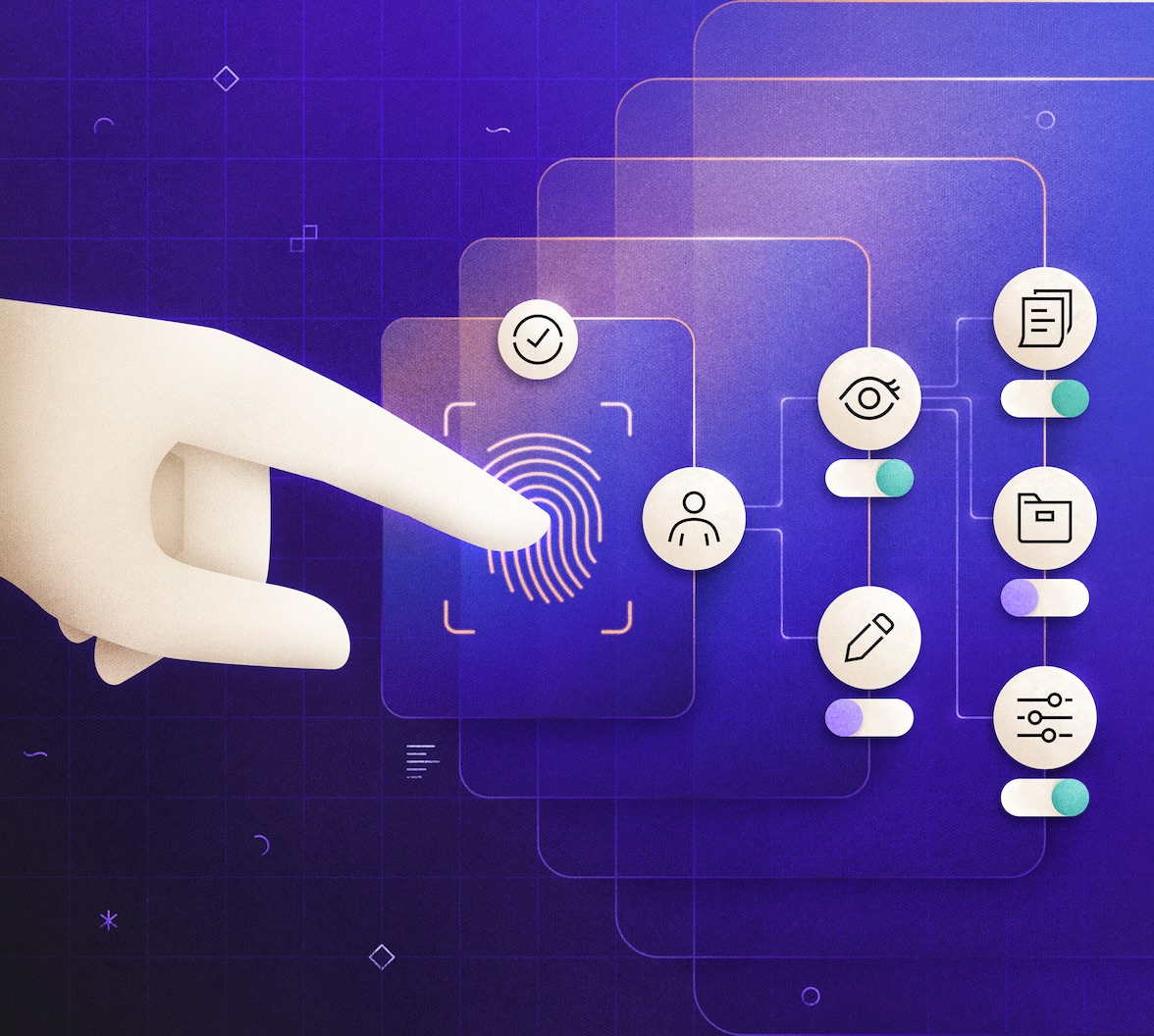When building a multi-tenant SaaS application, selecting the right authorization model is critical to ensure the security and scalability of your system. Authorization is not only about managing user access but also about ensuring that tenants remain isolated, protected, and—where necessary—able to collaborate. The right model for your SaaS depends on the complexity of your application, the relationships between users and resources, and how dynamic or flexible your access control needs to be. This guide provides a deeper dive into how RBAC, ABAC, and ReBAC can be implemented for multi-tenancy, focusing on what needs to be handled in code versus what can be centralized in a system. We’ll also touch on popular services like Auth0 Organizations, OPA, and Okta FGA to streamline your implementation.
Role-Based Access Control (RBAC)
Role-Based Access Control (RBAC) is often the first choice for SaaS applications that have clear roles with distinct access privileges and is often the most familiar option among developers. It’s a straightforward model where users are assigned roles (e.g., admin, editor, viewer), and those roles come with specific permissions. In a multi-tenant environment, RBAC needs some enhancements to ensure roles are properly scoped to each tenant. This way, the users' permissions are restricted to their organization.
In a multi-tenant setup, RBAC handles tenant isolation primarily by scoping roles to individual tenants. This means that roles like “admin” or “viewer” are not globally applicable across the system but are assigned on a per-tenant basis. For instance, a user might be an “admin” in “Tenant A” but only a “viewer” in “Tenant B”.
To enforce this isolation, your application will need to ensure that roles are checked within the tenant context before allowing access to resources.
At the code level, this means ensuring that the application always verifies which tenant the user is operating under when making role-based decisions. For example, when a user tries to access a resource, the system should confirm whether their “admin” role applies to that specific tenant’s resources, not to another tenant’s resources.
Notice that when using RBAC for authorization, a user under a certain role will get access to all the resources for that tenant. Other authorization models provide ways to scope the privileges of a user to specific resources within the tenant, and we’ll cover them later in the article.
There are simpler approaches to implementing RBAC into your application; for example, when using Auth0 for authentication, Auth0 offers an Organizations feature, which simplifies authentication and role assignments in multi-tenant environments. Auth0 Organizations allows you to easily manage users across multiple tenants (or organizations), where each user can be assigned roles specific to the organization they belong to. By using Auth0’s built-in support for multi-tenancy, you can delegate much of the tenant-specific role management to the identity provider, reducing the amount of tenant-scoped logic that needs to be hardcoded into your app.
Example use cases for RBAC:
- HR Management Platform: In an HR platform used by multiple companies, each company (tenant) has its own set of roles, such as "HR Admin" and "Employee." When an HR Admin from Company A logs in, their permissions are limited to the records of Company A, while an HR Admin from Company B has access only to their company’s records.
- AI-Powered Customer Support Tool: A SaaS platform for AI-powered customer support allows companies to manage their support teams. Each team has a role structure, where the "Team Lead" has access to configure the AI responses, and the "Support Agent" can only see suggestions.
Attribute-Based Access Control (ABAC)
ABAC allows you to define access control policies based on various attributes related to the user, resource, or environment. Unlike RBAC, which assigns static roles, ABAC dynamically evaluates attributes such as the user’s department, resource sensitivity, or even contextual factors like time and location. This makes ABAC more flexible for scenarios where access decisions depend on dynamic conditions.
In multi-tenant SaaS applications, ABAC can handle tenant isolation by including the tenant ID as an attribute in access control decisions. For instance, you can create policies that grant access to users based on their
tenantIdroledepartmentAt the code level, the application needs to collect the relevant attributes (e.g.,
tenantIduserRoleresourceSensitivityThere are some caveats, though; while ABAC allows for dynamic evaluation of the information, the relationships and structure of the information are hardcoded throughout the application, and if your attributes change, it may require code changes throughout the application. This is because the relationships between a user, its role, tenant, etc, are not inferred by the policy engine, but rather specified during authorization checks. For an inferred and more fine-grained approach, there’s a different authorization model which I will cover next.
For system-level implementation, ABAC policies can be managed using tools like Open Policy Agent (OPA) or a custom policy engine. These tools evaluate attributes dynamically, ensuring that access is granted only if all conditions are met. For multi-tenancy, this would include ensuring that users are only accessing resources within their tenant. `
Example use cases for ABAC:
- AI-Driven Healthcare SaaS: A hospital management system uses ABAC to grant access to patient records based on a doctor’s role, department, and the patient’s condition. Additionally, access is restricted to working hours.
- AI-Powered Marketing Platform: Marketing managers can access reports based on their role, the campaign they are working on, and the region of the campaign. ABAC policies check the region,
, andcampaignType
attributes to ensure the user is accessing data for their tenant’s campaigns only.role
Relationship-Based Access Control (ReBAC)
Relationship-Based Access Control (ReBAC) is ideal for SaaS applications where access control is based on complex relationships between users, resources, and organizations. Instead of simply granting permissions based on roles or attributes, ReBAC models relationships (e.g., "is the owner of," "can edit") and uses these to make access decisions. This is particularly useful for collaborative SaaS platforms where permissions are based on how users interact with resources.
If your SaaS application handles user-generated content, you’ll likely benefit from a ReBAC model)
In multi-tenant ReBAC implementations, tenant isolation is enforced by defining relationships within and across tenants. For example, a user might "own" a resource within one tenant, and another user might have "edit" permissions for that resource based on their relationship. Unlike RBAC, which assigns roles based on predefined hierarchies, ReBAC focuses on how entities (users, resources, tenants) are related.
At the code level, your application doesn’t need to hard-code tenant checks. Instead, all access control decisions are based on querying the relationship graph, which models how users and resources are linked. This reduces complexity, as the app doesn’t need to maintain tenant-specific logic.
For system-level implementation, OktaFGA (or OpenFGA, based on Google Zanzibar’s model) provides a powerful platform for managing ReBAC at scale. OktaFGA stores and manages relationships in a graph database and allows your application to query these relationships in real time. You can model tenant-specific relationships and even handle cross-tenant scenarios, such as allowing external collaborators limited access to certain resources.
Example use cases for ReBAC:
- AI-Enhanced Document Collaboration Platform: In this multi-tenant SaaS, users can create, share, and edit documents within their tenant. ReBAC models relationships like "owner," "editor," and "viewer" for each document.
- AI-Powered Learning Management System: A university (tenant) uses the platform to manage courses and student access. Students are "enrolled" in courses, and professors "teach" those courses. ReBAC models these relationships, ensuring that only enrolled students can access course materials. If a student transfers to a new university (tenant), their access is automatically updated based on their new relationships within the system.
Summary
When it comes to building a multi-tenant SaaS application, your choice of authorization model determines how much of the access control logic is handled by your code versus the authorization system and how wide or fine grained the access control is over the resources of the tenants.
- RBAC requires tenant-specific role checks in your code, but tools like Auth0 Organizations can offload much of this complexity by managing roles and tenants externally.
- ABAC offers fine-grained, context-aware access control, where the system dynamically evaluates policies based on attributes like
andtenantId
. Tools like Open Policy Agent (OPA) can centralize these decisions, reducing the need for custom code.role - ReBAC excels in scenarios with complex, dynamic relationships. Solutions like OktaFGA allow you to manage relationships at scale without embedding tenant-specific logic in your app. Instead, the relationship engine handles access control based on real-time relationships between users and resources.
By leveraging these models and tools, you can build a secure, scalable, and maintainable multi-tenant SaaS platform that fits your unique authorization needs.
Thanks for reading!
About the author

Juan Cruz Martinez
Staff Developer Advocate
